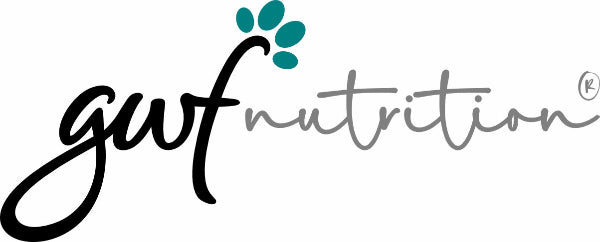Written by Dr. Tom Shurlock for and on behalf of GWF Nutrition Limited.
Knowledge Base
The Oatinol Delivery System
Copyright: GWF Nutrition Limited - Not for Reproduction.
The gastro-intestinal tract is an organ whose function is to process food into biochemical compounds that can be metabolized to produce energy, growth and support all life processes. It uses various methods, from mechanical (chewing) to chemical (enzymatic breakdown) to symbiotic (bacterial fermentation) in order to breakdown food into less complicated nutrients that are then able to be absorbed across the gut wall and taken into the body to be metabolised.
There are two main sites for this. For enzymatically generated nutrients – and these are mainly amino acids from protein, sugars from complex carbohydrates and fatty acids from oil – the small intestine is the region of absorption. For fermented products, these are generally absorbed in either the rumen area or the hindgut.
Sugars and amino acids are mainly absorbed by an active process; that is energy is expended in order to drive specific transport systems. For example, the sugar glucose depends on a sodium pump system to cross the cells lining the gut wall and reach the blood system (Figure 1), as do amino acids, whilst two or three amino acids linked as peptides use a hydrogen pump system.

Figure 1. Active Transport System – Sodium Pump
Very small nutrients, such as water and short chain volatile fatty acids (VFA) can actually squeeze between the cells – the Paracellular route (Figure 2)– and there are nutrients, such as lactic acid and β-glucans, that can increase the gap.

Figure 2. Small Molecules Passing Between Epithelial Cells
The Oatinol Delivery System (ODS) utilizes and exploits a third system, which is the diffusive transport system. Although the gastro-intestinal tract medium (Food contents, saliva, stomach acid, enzymes and nutrients) is mainly water based the nutrients have to cross the cell walls of the gut lining and these are predominantly lipid (oil, fat) and protein, both of which are immiscible in water. So although some nutrients are actively absorbed, many others cross passively (although this is not a full explanation) and so need a carrier that can work both in an aqueous and a lipid environment.
Fats and oils are soluble across the cell membrane and so can diffuse across the gut (Diffusion – Figure 3) They can also form emulsions with water soluble nutrients in the presence of an emulsifier. This is normally the bile salts which are released into the small intestine. The resultant emulsified micelles can cross the gut by a mechanism known as Facilitated Diffusion (Figure 4). This is a step beyond simple diffusion; as the lipid/protein interface is fluid, lipid micelles can partially link to the cell lipid faction, which is then ‘flipped’ across the cell wall.

Figure 3. Passive Diffusion of Oil Molecules

Figure 4. Facilitated Diffusion
Larger molecules can be captured by the micelles forming large complexes and these can be transported by Endo-/Exo-cytosis; the cell wall forms a coating around the complex which crosses the cell and is expelled at the other side (Figure 5).

Figure 5. Endocytsis to Exocytosis
So where does ODS fit into these mechanisms? It is mainly down to the components of the ingredients.
Oatinol incorporates oils from a number of sources, including hemp and oats. These are very rich in a type of fat called polar lipids, either glycolipids or phospholipids. It means that one end of the lipid is hydrophilic (water attractive), the other hydrophobic (water repellent); and that allows them to form very fine emulsions compared to normal. Oat oil emulsions have been reported as being 2/5 the size of bile emulsions and so would be able to easily cross the barrier through the paracellular route.
The ease of producing emulsions, the strong polarity of ODS, allows complexing with molecules that are generally larger than those usually absorbed by the lipid route. It has been a matter of debate whether larger molecules, such as glucosamine or hyaluronic acid, can be efficiently absorbed and by what process. However, by incorporating these molecules into emulsions passive absorption will improve their bioavailability. It is this mechanism that utilizes excipients, such as surfactants (a type of phospholipid), to deliver complex drugs in pharmaceutical delivery.
ODS is more than providing an efficient route for large molecule delivery. The fatty acids from the neutral fats are rich in long chain polyunsaturated fatty acids. These include the omega-3 and omega-6 fatty acids that are recognized as supporting many processes within the body, from cardiac and circulatory systems to bone formation and maintenance. Long chain fatty acids are absorbed more readily than short chain and unsaturated more readily than saturated. The neutral fatty acids in ODS have very high bioavailability, improving lipid absorption systems.
ODS also supplies β-glucans into the equation. Β-glucans have been shown to increase the absorptive capacity both by enlarging the paracellular route and by its fermentation releasing butyric acid that energises gut membrane cells.
Oils, fats and their derivatives are absorbed through various mechanisms, based around passive diffusion and the solubilisation of the cell membranes in the gut wall. ODS improves this process as they help create finer emulsions, micelles that can capture larger molecules, have high levels of phospholipids that impact on facilitated diffusion and provide neutral fatty acids that are more readily absorbed. Combined with factors that can facilitate paracellular movement ODS supports an improved absorptive process and that ensures a greater range of nutrients can be metabolized.
